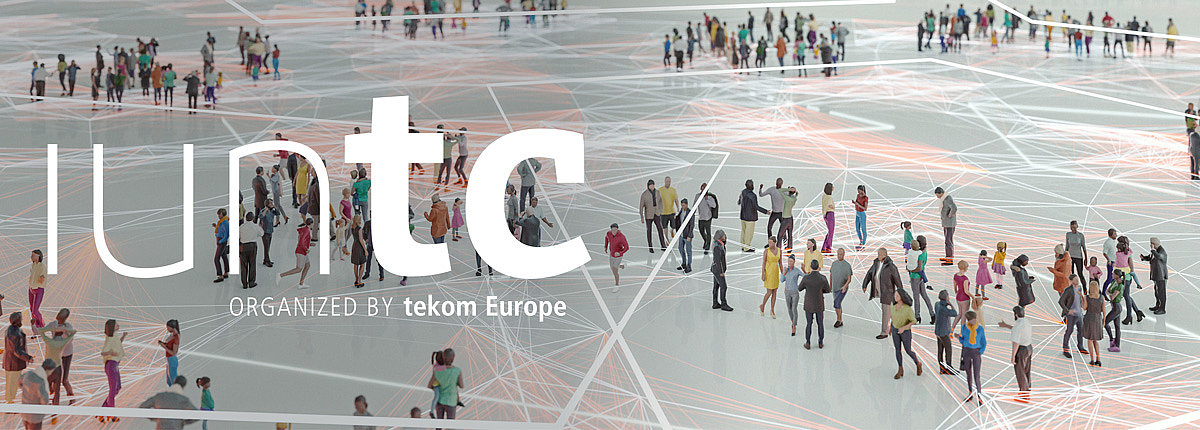The first in-person meeting of the International Network of Universities in Technical Communication (IUNTC) took place on May 4 at Karlsruhe University of Applied Sciences, Germany, preceding the European Academic Colloquium (EAC) on May 5.
About 20 people from aross Europe – university teachers, students and others interested in technical communication – gathered to discuss important topics on studying and teaching technical communication. It provided an excellent opportunity for networking, exchanging ideas, finding project partners, and learning about latest trends.
In keeping with the motto for the eighth European Academic Colloquium “The next steps in digital transformation”, the question arose as to how ChatGPT will change teaching and learning. Generative AI technologies, such as large language models, have the potential to revolutionize much of our higher education teaching and learning. Many questions remain to be answered. For example, will students be allowed to use ChatGPT for a seminar or the drafting of a paper or will this be considered cheating? How can students best use ChatGPT? What skills should they acquire, and what skills are now obsolete because of ChatGPT? Teachers and lecturers also are also confronted with many questions: Which skills should they teach? How can they test their students’ competencies, rather than their ability to prompt generative AI models. And how can ChatGPT and other systems based on generative AI be used to increase the efficiency of developing training, or even improve teaching.
Teachers need to ensure that students do not simply copy and paste output from ChatGPT or use ChatGPT during assignments. The new technology challenges us to reassess how we teach courses, learn for exams, write seminar papers and theses, and assess student learning and performance.
Demonstrations during our meeting helped to improve the participants’ understanding of ChatGPT. ChatGPT is an AI-based conversational agent that can generate various types of content, including college-level essays. Generative AI systems can generate text, images, or other representations with relatively little human input. They work most effectively when the prompt is precise and specific, so it is really important to formulate a good question, to which ChatGPT then "writes" the answer.
For example, participants of the IUNTC asked ChatGPT to write an opening speech for the following day’s EAC. All participants were amazed at how good the result was. Since this was a vivid experience of how the technology will revolutionize technical communication, the group decided to show it at the opening of the EAC – a demonstration of how AI and digitization will change technical communication and teaching.
Hence, it is not surprising that the advent of generative AI fundamentally challenges accepted knowledge, assumptions, and behaviors in higher education. One thing is for sure: ChatGPT and GPT-4 are only the forerunners of what we can expect from future generative AI-based models and tools. So, it is worth looking into the impact on higher education.
Another central question during the meeting was: How can we make technical communication more attractive as a field of study for more students? The representative of the University of Munich University of Applied Sciences suggested to find project partners in the community for joint marketing campaigns. Finding students for the TC courses of study is a common challenge for many universities. However, it applies not only to technical communication, but also to other courses of study. In spite of the challenge of recruiting students, technical communication graduates are highly sought-after in the job market and can expect interesting job offers and a good salary. Yet, many students are reluctant to commit to technical subjects that involve a lot of technology. Current topics, such as user experience design or information design, appear more attractive. For this reason, many universities are adapting the content of their study programs. In addition, technical communication is not very well recognized as a profession in many countries. Targeted recruitment campaigns need to be increased. In addition, the desired target group – school graduates – is not easy to reach. It is important here to leverage social media to showcase technical communication’s relevance and importance to attract more students to this field. Therefore, tekom as the professional organization for technical communication can help attract more students by providing networking opportunities and marketing campaigns.
Future meetings
In our next IUNTC meeting on Wednesday, 7th of June at 3 PM we will continue with this topic in further detail. The topic: “AI in academia: Balancing benefits and challenges” by Jenni Virtaluoto and Prof. Sissi Closs.

